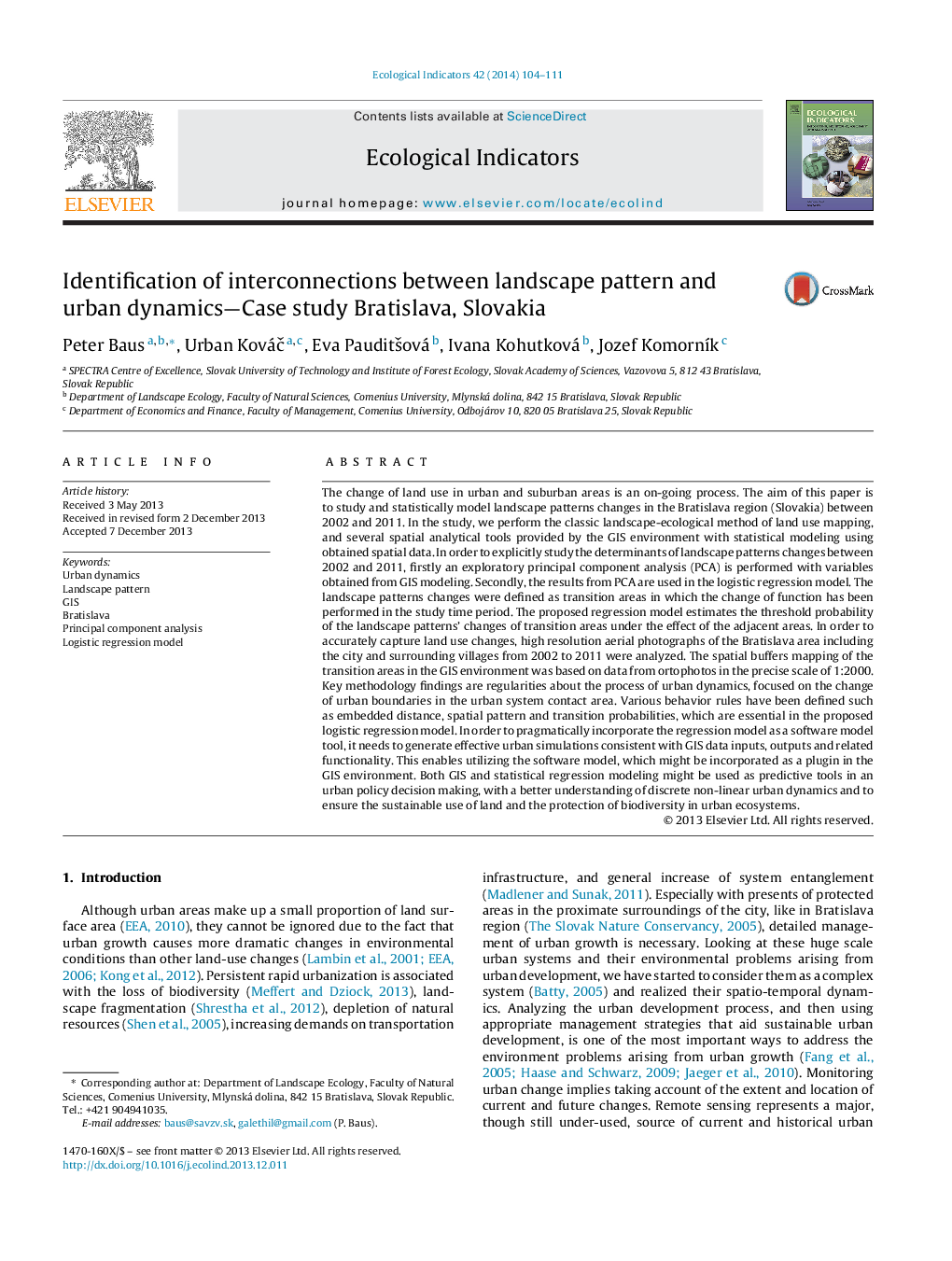| کد مقاله | کد نشریه | سال انتشار | مقاله انگلیسی | نسخه تمام متن |
|---|---|---|---|---|
| 4373146 | 1617159 | 2014 | 8 صفحه PDF | دانلود رایگان |
عنوان انگلیسی مقاله ISI
Identification of interconnections between landscape pattern and urban dynamics-Case study Bratislava, Slovakia
ترجمه فارسی عنوان
شناسایی ارتباطات بین الگوی چشم انداز و پویایی شهر - مطالعه موردی براتیسلاوا، اسلواکی
دانلود مقاله + سفارش ترجمه
دانلود مقاله ISI انگلیسی
رایگان برای ایرانیان
کلمات کلیدی
موضوعات مرتبط
علوم زیستی و بیوفناوری
علوم کشاورزی و بیولوژیک
بوم شناسی، تکامل، رفتار و سامانه شناسی
چکیده انگلیسی
The change of land use in urban and suburban areas is an on-going process. The aim of this paper is to study and statistically model landscape patterns changes in the Bratislava region (Slovakia) between 2002 and 2011. In the study, we perform the classic landscape-ecological method of land use mapping, and several spatial analytical tools provided by the GIS environment with statistical modeling using obtained spatial data. In order to explicitly study the determinants of landscape patterns changes between 2002 and 2011, firstly an exploratory principal component analysis (PCA) is performed with variables obtained from GIS modeling. Secondly, the results from PCA are used in the logistic regression model. The landscape patterns changes were defined as transition areas in which the change of function has been performed in the study time period. The proposed regression model estimates the threshold probability of the landscape patterns' changes of transition areas under the effect of the adjacent areas. In order to accurately capture land use changes, high resolution aerial photographs of the Bratislava area including the city and surrounding villages from 2002 to 2011 were analyzed. The spatial buffers mapping of the transition areas in the GIS environment was based on data from ortophotos in the precise scale of 1:2000. Key methodology findings are regularities about the process of urban dynamics, focused on the change of urban boundaries in the urban system contact area. Various behavior rules have been defined such as embedded distance, spatial pattern and transition probabilities, which are essential in the proposed logistic regression model. In order to pragmatically incorporate the regression model as a software model tool, it needs to generate effective urban simulations consistent with GIS data inputs, outputs and related functionality. This enables utilizing the software model, which might be incorporated as a plugin in the GIS environment. Both GIS and statistical regression modeling might be used as predictive tools in an urban policy decision making, with a better understanding of discrete non-linear urban dynamics and to ensure the sustainable use of land and the protection of biodiversity in urban ecosystems.
ناشر
Database: Elsevier - ScienceDirect (ساینس دایرکت)
Journal: Ecological Indicators - Volume 42, July 2014, Pages 104-111
Journal: Ecological Indicators - Volume 42, July 2014, Pages 104-111
نویسندگان
Peter Baus, Urban KováÄ, Eva PauditÅ¡ová, Ivana Kohutková, Jozef KomornÃk,
